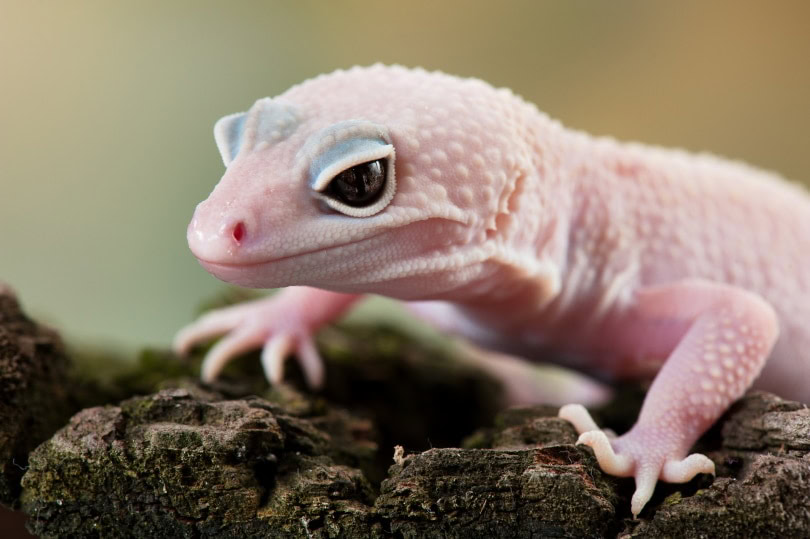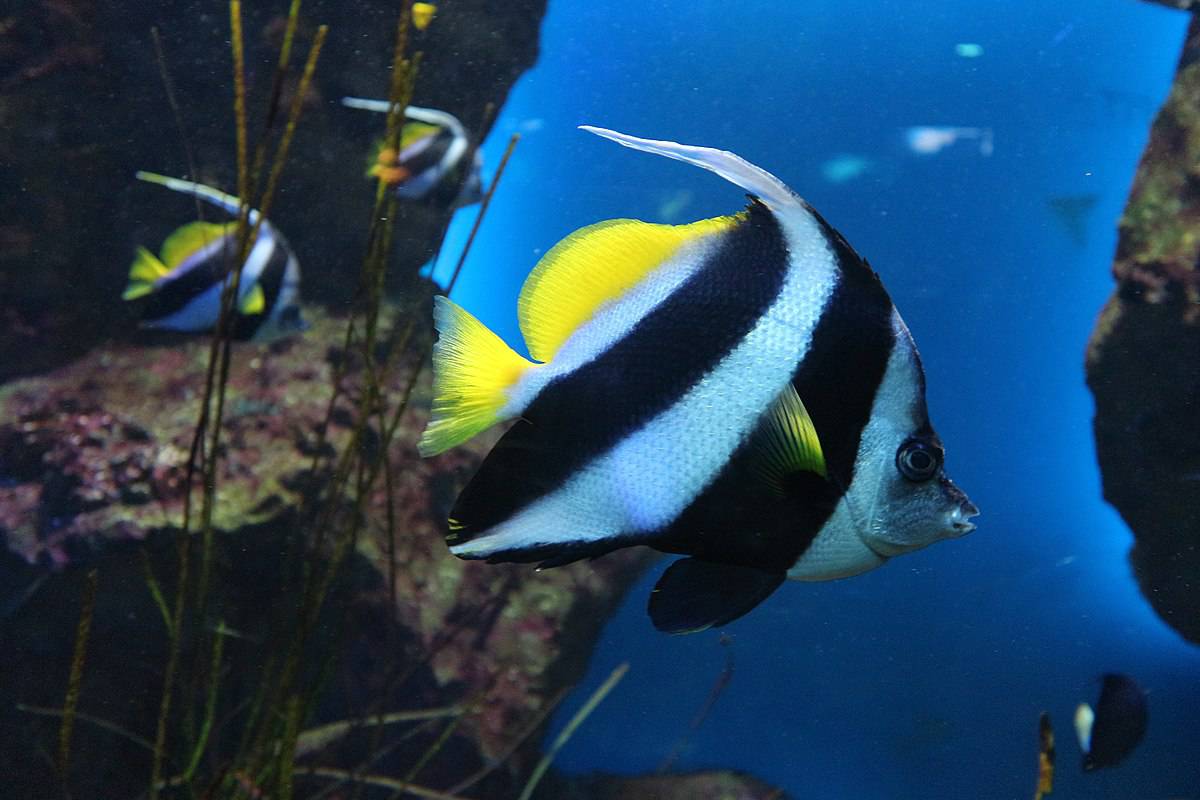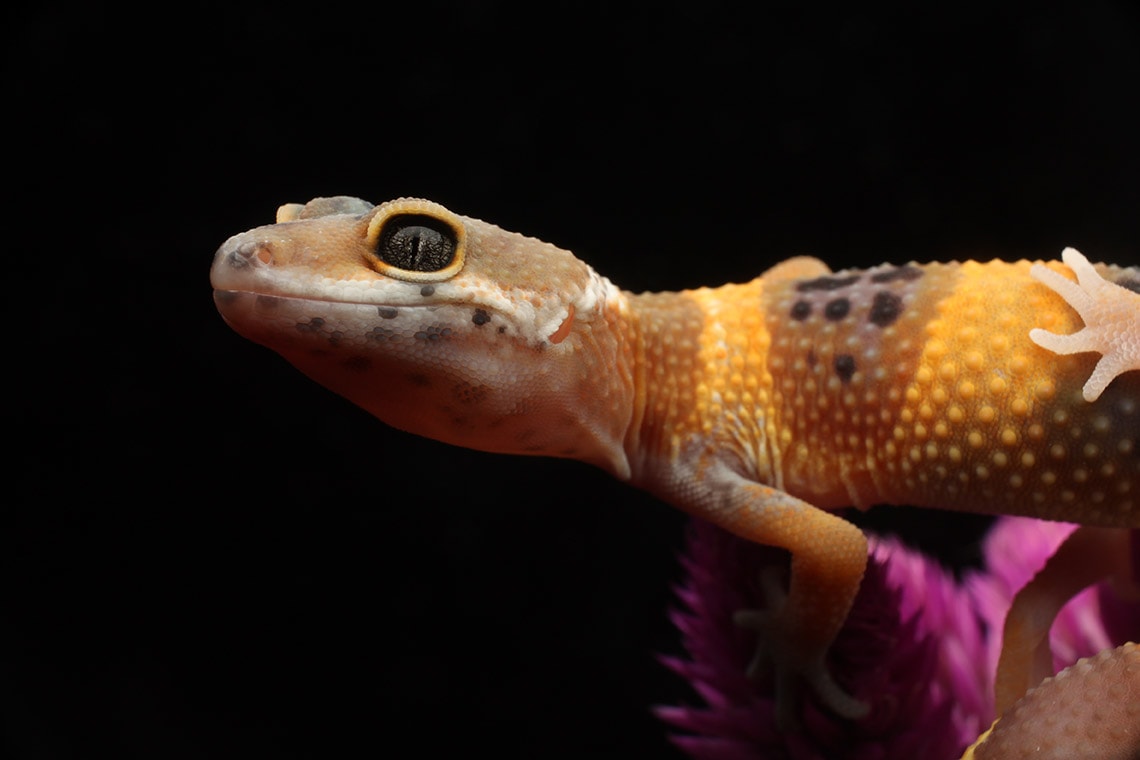Click to Skip Ahead
The Blizzard leopard gecko is a docile and simple reptile to keep in captivity. They rarely bite their handlers and make great beginner reptiles. Leopard geckos can live 20 years with good care. They are a long-term commitment, and you need to be prepared to care for this gecko for a large portion of your life.
These inquisitive geckos have a beautiful coloring that makes them stand out against other geckos. The hardy Blizzard leopard gecko is ideal for reptile enthusiasts who can provide a proper habitat and enrichment for them to thrive.
 Quick Facts about Blizzard Leopard Geckos
Quick Facts about Blizzard Leopard Geckos
| Species Name: | Eublepharis Macularius |
| Common Name: | Leopard gecko |
| Care Level: | Beginner |
| Lifespan: | 15–20 years |
| Adult Size: | 6–10 inches |
| Diet: | Insectivorous |
| Minimum Tank Size: | 20-gallon vivarium |
| Temperature & Humidity: | 77° F to 89° F and a humidity level between 30% to 40% |
Do Blizzard Leopard Geckos Make Good Pets?
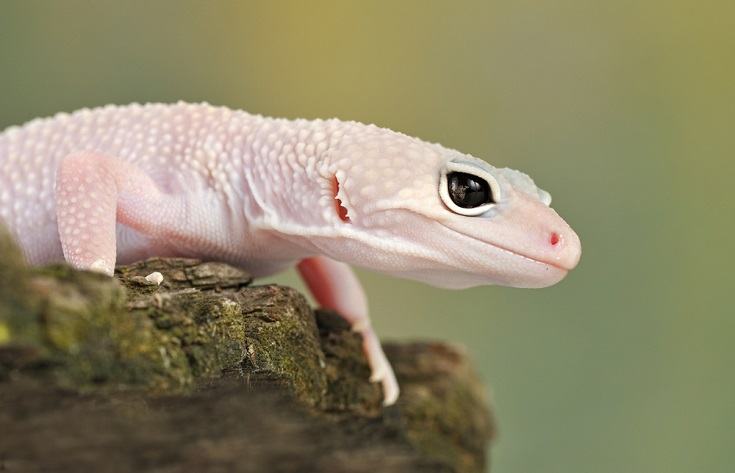
Blizzard Leopard geckos make excellent pets for beginners looking for a hardy and undemanding reptile to start their reptile-keeping journey. They are more difficult to care for than dogs and cats, but their husbandry is simple as soon as you learn the basics.
Before purchasing a Blizzard lizard gecko, you must set up a warm vivarium with controlled humidity levels. It will take time to master the skill of setting up an enclosure that is perfect for your gecko. These geckos will require daily maintenance, and you must ensure that you can take at least an hour out of your day to feed, mist, and tidy up the enclosure.
Keep in mind that your gecko will require routine vet visits with a qualified reptile vet since they are prone to developing health issues. The health and longevity of your gecko will depend on the level of care it receives, and many leopard gecko owners have great success keeping them healthy in captivity.
Appearance
Blizzard Leopard geckos are a morph variant devoid of patterns on their body. Instead, they have solid color across their entire body. Blizzard morphs are typically a stunning white or yellow color. Some blizzards are darker and labeled as Midnight blizzard leopard geckos. The coloration is commonly referred to as a pale single-colored morph.
The body of the Blizzard leopard gecko is thick and stubby with a triangular head. They have two eyes on either side of their head above their nostrils. The famously thick tail is a prominent feature for leopard geckos, and the broad tail ends at a thin point. You may notice that the tail takes on a pale pink coloration.

How to Take Care of Blizzard Leopard Geckos
Habitat, Tank Conditions & Setup
Tank
Image Credit: bulinko, Shutterstock
The vivarium can be set up as elaborate or plain as you desire. A 20-gallon vivarium can house a pair of female leopard geckos with no problem. Larger groups require more space of 30 or 40 gallons. Leopard geckos require a vivarium with more horizontal space.
You will need to mist the enclosure regularly to keep the humidity at desirable levels. It’s also essential to clean any visible waste littering the enclosure. All uneaten food should be removed to prevent spoilage. Constantly misting the enclosure can develop a film over the glass, which should be cleaned with a damp microfiber cloth and a reptile-safe cleansing solution.
Lighting
Artificial lighting and UV lights are unnecessary for Blizzard leopard geckos because they are crepuscular. You will need an overhanging light to provide a day and night cycle for your gecko. A heating light is necessary to keep the enclosure warm. The lights should be turned off at night to give your gecko complete darkness, and other heating methods should be turned on.
Heating (Temperature & Humidity)
The overall temperature and humidity in the vivarium are important to your gecko’s health. Heat is necessary for thermoregulation since they do not produce body heat. A heating pad or mat under the substrate or vivarium is recommended. There should be a basking spot with a temperature between 84° F and 88° F. The heating mat or pad should cover 1/3 of the enclosure to promote good heat distribution. The temperature on the cooler side of the vivarium should be between 75° F and 80° F.
Important: Placing the heating pad or mat under the substrate can burn the gecko, so make sure that the substrate is layered to prevent this.
Substrate
Many types of substrates can cause impactions in your blizzard leopard gecko. It is best to use a moist paper towel for hatchlings or young geckos and fine sand as the primary substrate in the vivarium.
| Tank Recommendations | |
| Tank Type: | 20-gallon glass vivarium |
| Lighting: | Day and night cycle |
| Heating: | Heating pad/mat under the substrate or vivarium |
| Best Substrate: | Fine sand |

Feeding Your Blizzard Leopard Gecko
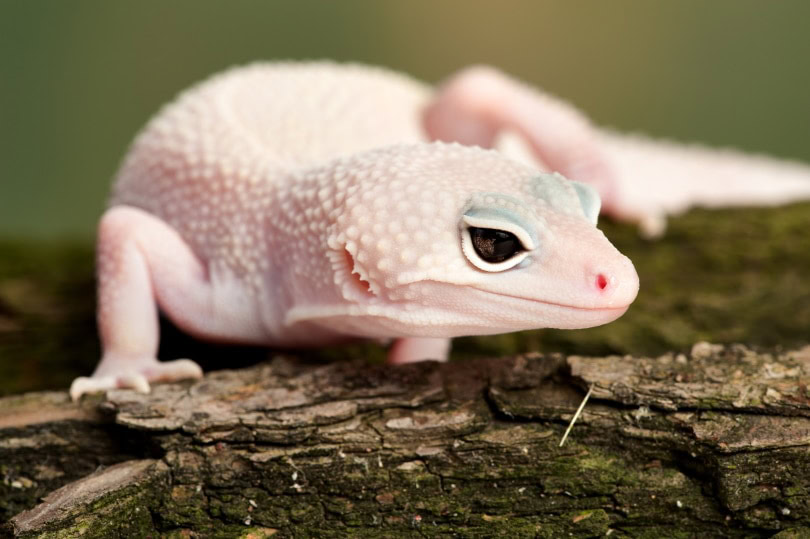
Diet is important in maintaining a blizzard leopard gecko’s health. They are insectivores, and their diet is mainly made up of insects. Crickets, locusts, and worms should form the primary part of their diet. They should also have a shallow dish of fresh water inside the enclosure to keep them hydrated. You will need to supplement the diet with calcium and multivitamins like Nutrobal. Do not overfeed supplements, as leopard geckos can overdose on vitamins but not calcium.
Blizzard Leopard geckos have been known to use their water dish as a toilet, and it should be cleaned regularly. Hatchlings and young geckos should be fed three to eight insects per day, whereas adults should eat five to nine insects every 2 to 3 days.
| Diet Summary | |
| Fruits | 0% of the diet |
| Insects | 100% of diet – crickets, mealworms, locusts, worms. |
| Meat | 0% of the diet |
| Supplements Required | Nutrobal calcium supplement |
Keeping Your Blizzard Leopard Gecko Healthy
A healthy blizzard leopard gecko should have minimal health problems. Since leopard geckos are tolerant of different environmental conditions, they are hardy enough to endure minor illnesses throughout their life. They rarely suffer from diseases and ailments. However, all reptiles should be quarantined for 2 months before being placed with other reptiles to avoid spreading diseases.
Common Health Issues
- Metabolic bone disease: This occurs when your gecko is not getting enough calcium in its diet. It causes the body to extract calcium from its bones. The main signs are swollen joints, leg curvatures, and a soft jaw with trouble eating.
- Respiratory infection: If the leopard gecko is exposed to cool temperatures below 75°F for a prolonged period, it will develop a suppressed immune system that allows a respiratory infection to develop.
- Tail loss: If your gecko feels threatened, it will drop its tail as a defense mechanism to distract predators. This is a problem since the tail stores fat reserves. The tail will grow back but will look vastly different than the original.
Lifespan
If you obtain your Blizzard leopard gecko as a hatchling or juvenile, you should expect to care for it for two decades. They have an impressive lifespan, and healthy specimens should have few issues making the 15- or 20-year mark. Keeping your gecko in a suitable environment and feeding a balanced diet is an excellent way to increase their longevity.
Breeding
Breeding blizzard leopard geckos is an easy task. If you plan to breed your leopard gecko, you need to make sure that you are prepared for possible medical issues that require vet visits and an incubating machine for the eggs, and you must be able to take several hours out of your day to feed and care for the hatchlings. Leopard geckos should be bred when they’re over a year old and weigh 45 to 50 grams.
You should set up the equipment and egg incubator beforehand. Breeding your geckos when they are underweight or unhealthy will cause the breeding female to die prematurely, or the eggs may not be viable. February to September is an ideal breeding season for these geckos, and the breeding pair should produce healthy hatchlings if the eggs are incubated correctly.
Are Blizzard Leopard Geckos Friendly? Our Handling Advice
Blizzard leopard geckos are docile and have a friendly personality. Handling should be no problem with leopard geckos. They have the potential to bite when stressed, but it isn’t common. Overall, they are quite inquisitive and enjoy being held by their owners.
Blizzard leopard geckos that are held routinely as hatchlings will be more friendly. Avoid holding your gecko from the tail incorrectly, as this can cause the gecko to release its tail in defense. Use gentle movements when holding your leopard gecko, and do not carry it around in case it jumps out of your grasp.
Shedding: What to Expect
Blizzard Leopard geckos shed their skin every 2 to 5 weeks. Most owners will not notice the shedding and rarely have problems during shedding. Some geckos need help to release the shed skin and should be placed in a shallow dish of warm water. Never rip off the skin since it can damage the delicate skin underneath.
The shed rate is determined by their growth. Young leopard geckos shed more frequently as they are in their optimal growth stage. During shedding, the humidity should be slightly raised so the dead skin can come off easily.
How Much Do Blizzard Leopards Cost?
Blizzard leopard geckos can be purchased from a reptile store or reputable breeder. A blizzard leopard gecko will cost more than other morphs due to the solid coloration. You can expect to pay between $75 and $230 for one.
Care Guide Summary
- Docile nature
- Inquisitive and friendly
- Simple diet
- Males should not be housed together
- Needs time to adjust to a new environment
- Prone to health issues
 Final Thoughts
Final Thoughts
Blizzard Leopard geckos make great pets for the whole family, and when cared for properly, they will spend several years bonding with you. If you follow the specific care requirements, you can raise them to be happy and healthy. Always check with your local nature conservation center if you need a permit to own a leopard gecko and do the necessary paperwork if that is the case.
Featured Image Credit: bulinko, Shutterstock
